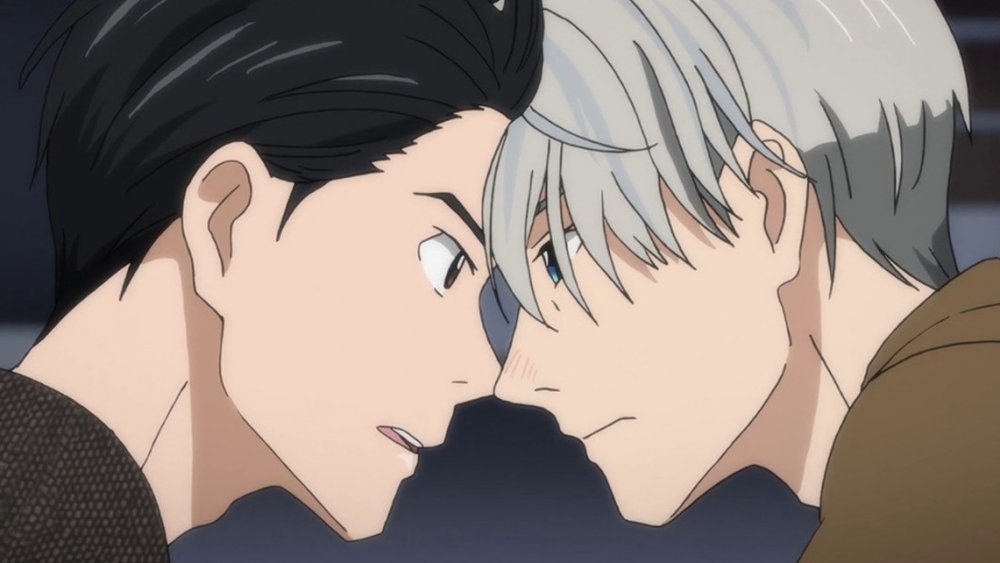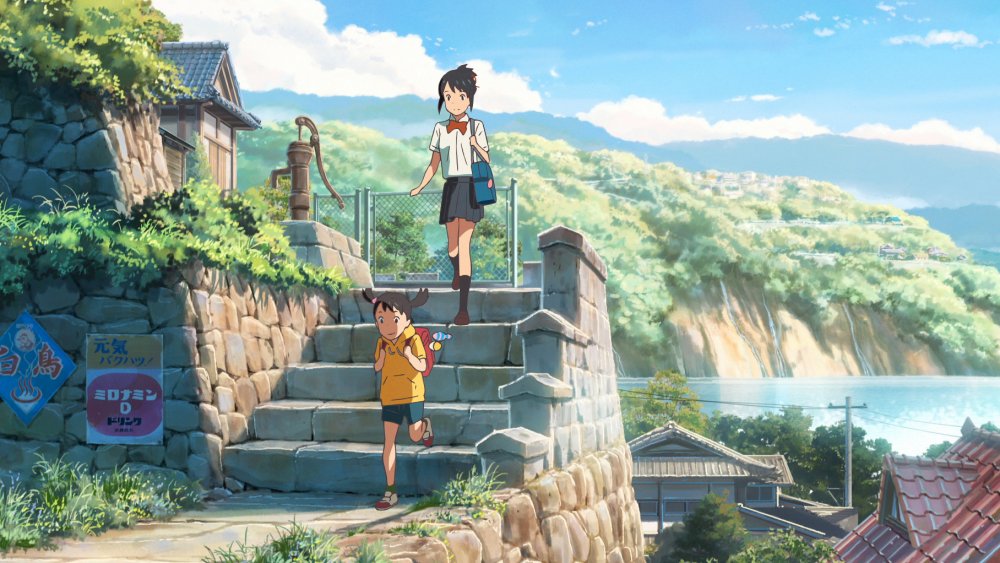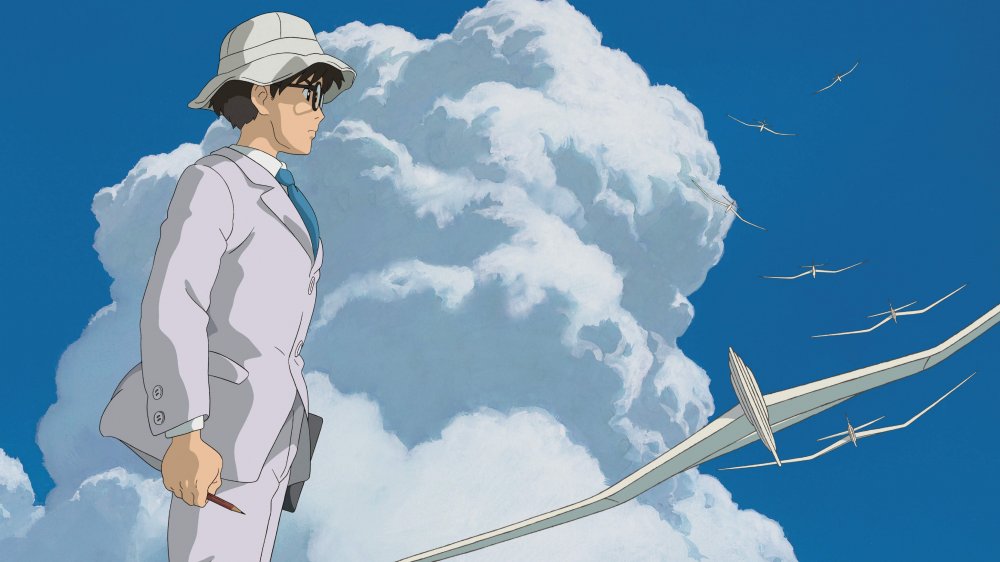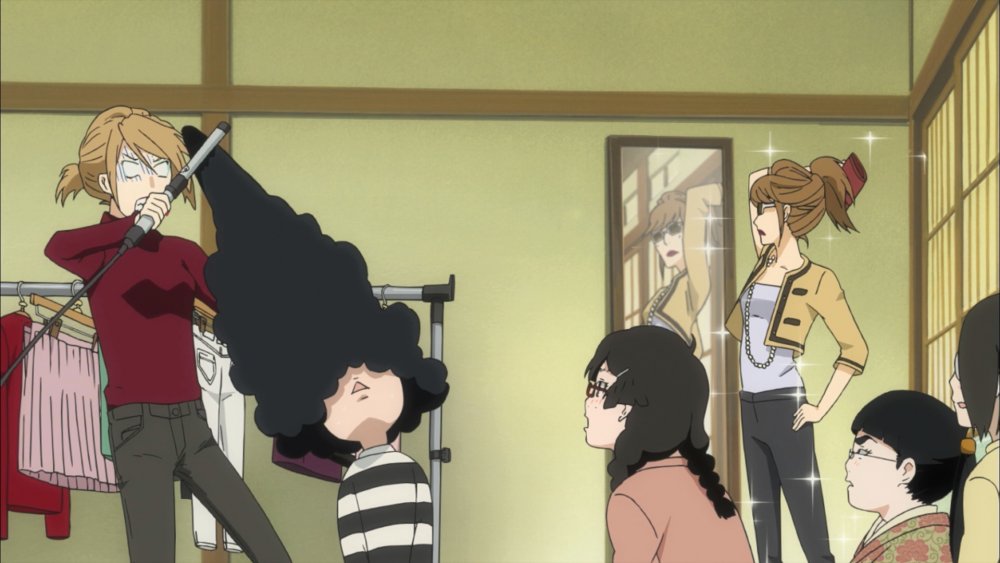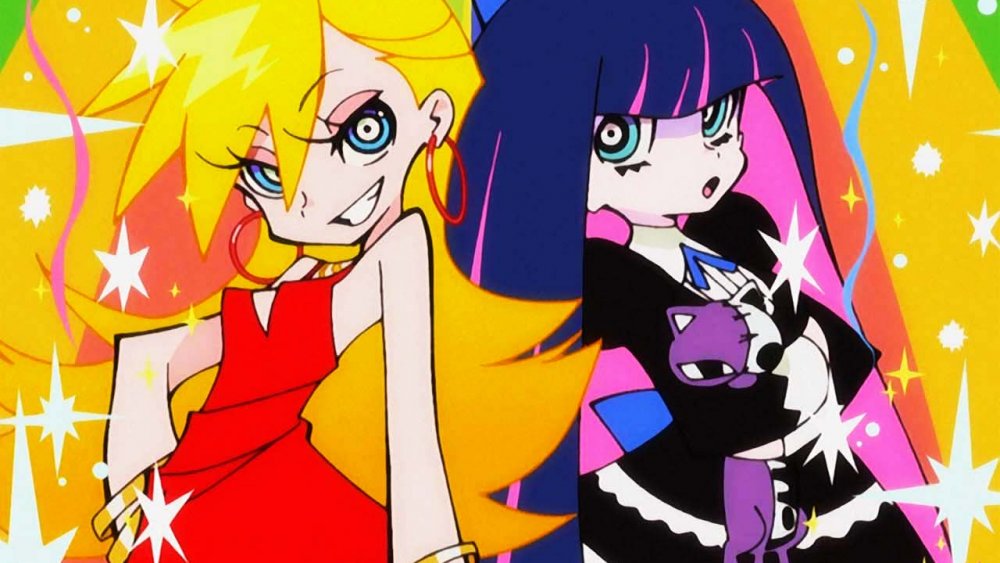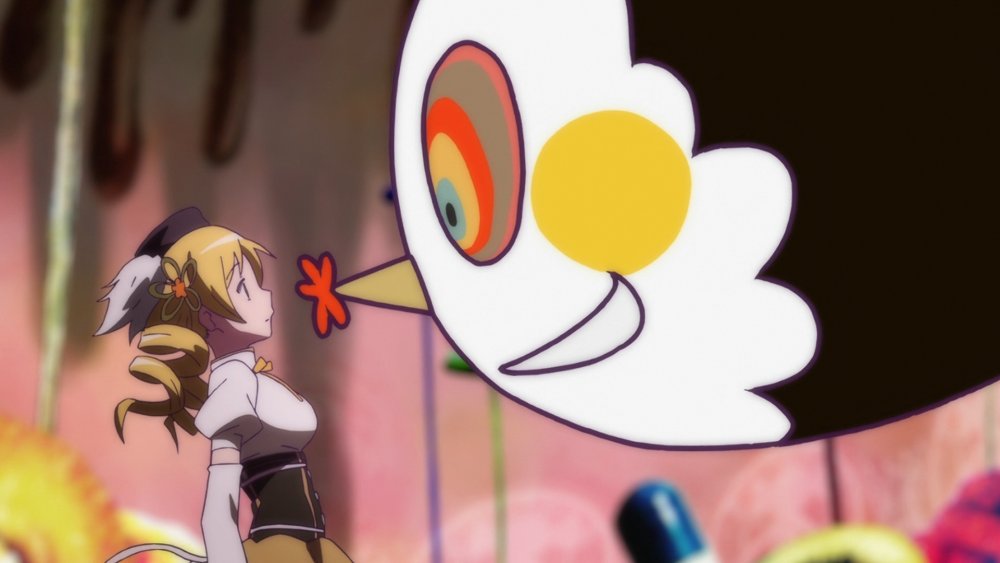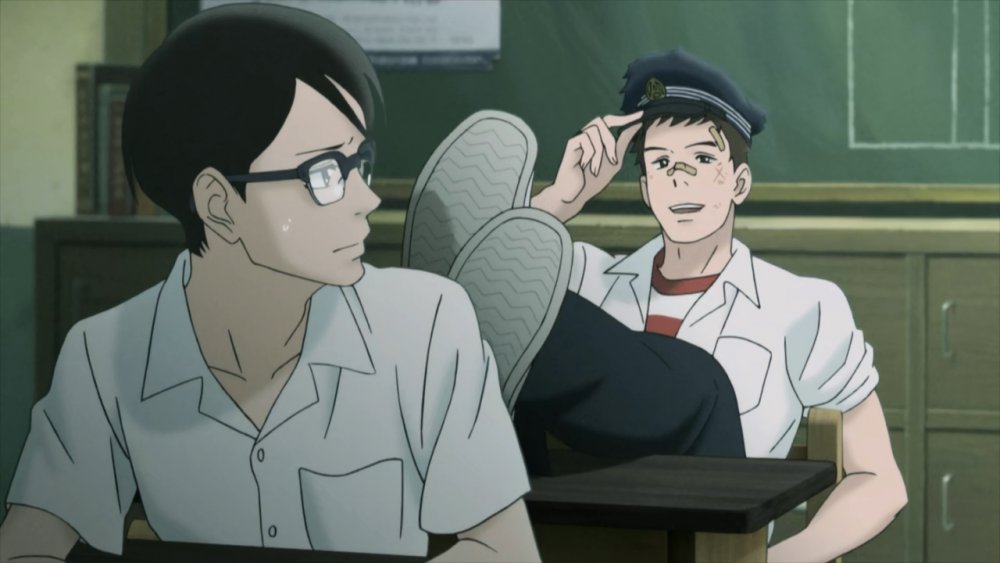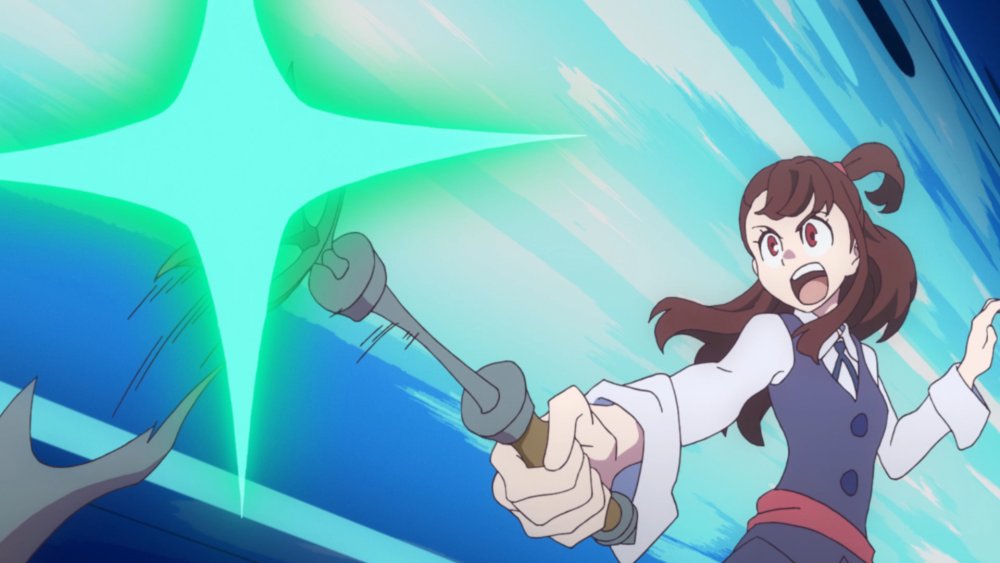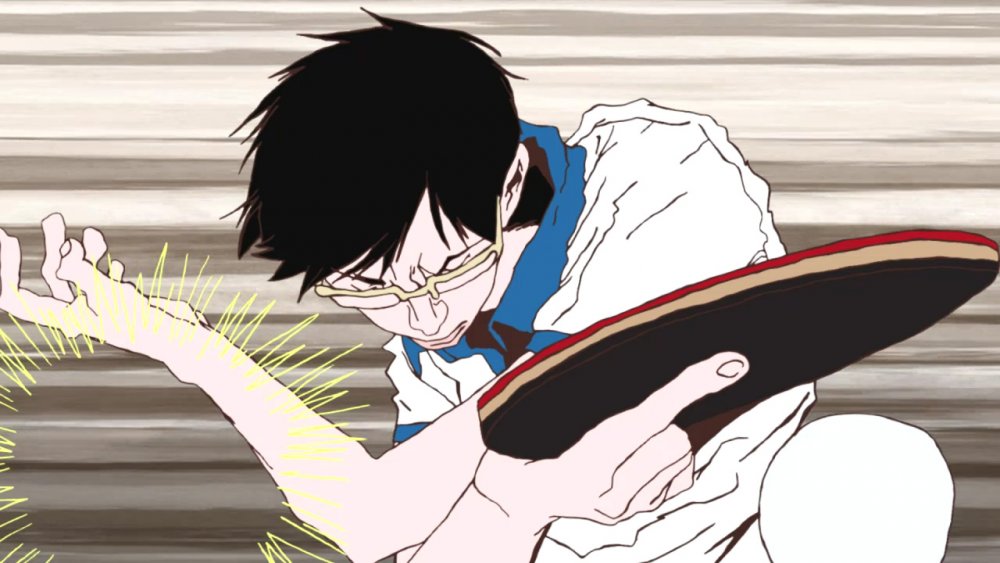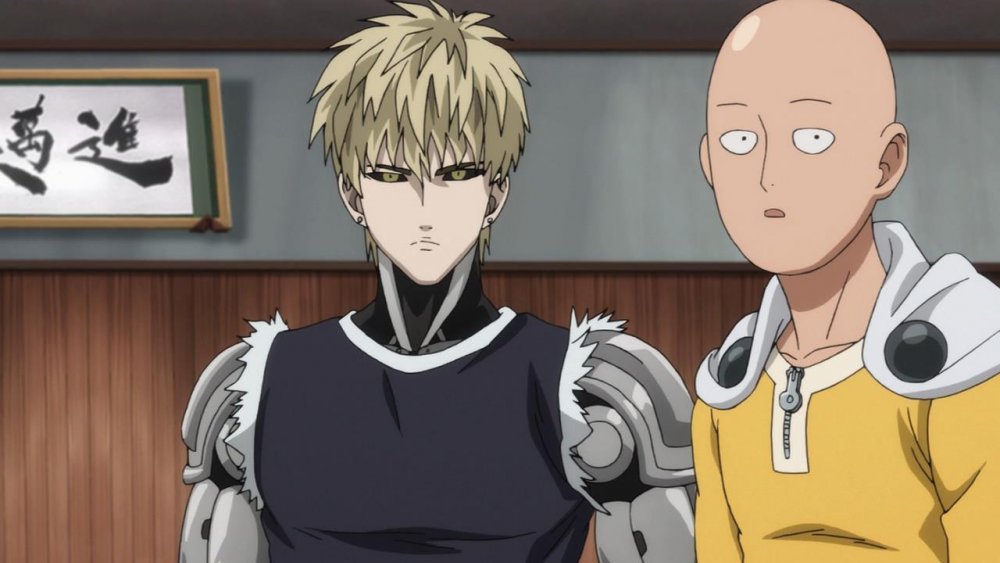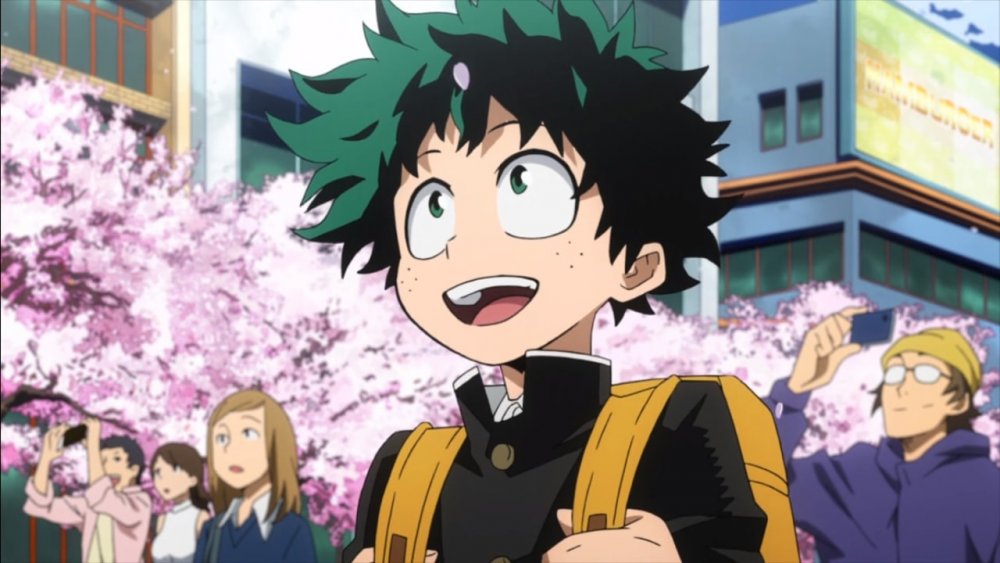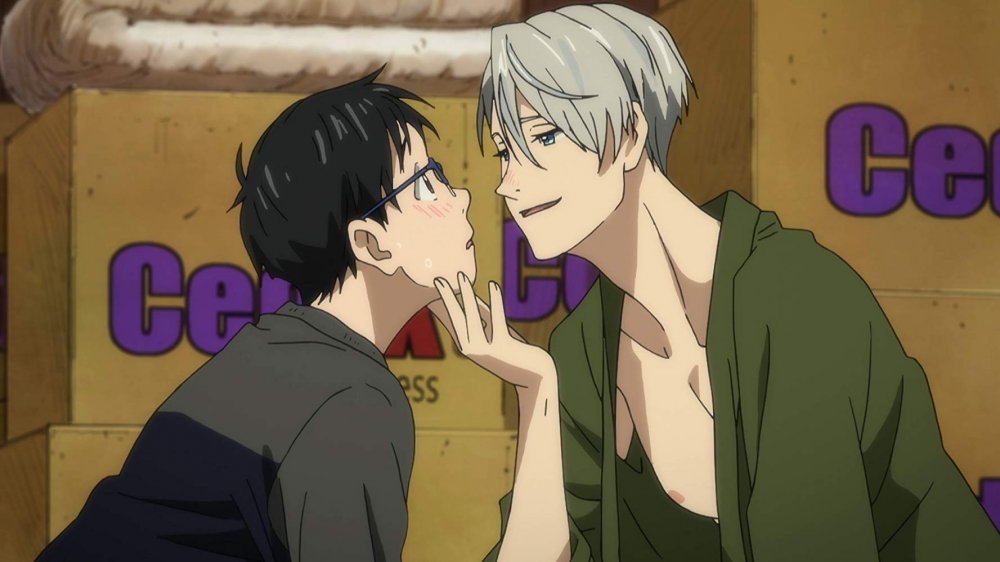The Best Anime Of The Past Decade
The 2010s produced anime like never before. Tales of love, magic, and betrayal flooded the airwaves on all manner of devices, reaching all manner of people. Stalwart operations like Studio Ghibli explored new frontiers in animation with movies like Princess Kaguya, while entirely new entities like Trigger emerged with mission statements as brash and bold as Kill la Kill. Beloved series like Sailor Moon and Cardcaptor Sakura returned with brand new stories. Access grew wider than ever before with streaming services from Funimation, Crunchyroll, and even mainstream platforms like Netflix. Jaden Smith made an anime with the Vampire Weekend front man. The Battle Angel Alita movie, teased since the early 2000s, actually happened — and more shockingly still, it was actually pretty good.
Beyond all the technological advancements and fandom chatter, however, lies the anime itself. There were true triumphs in the 2010s, utter failures, and a whole lot in between. What were the best and brightest entries of this decade? It's a big question — fans were spoiled mightily in every genre, every year, and from every studio. We're ready to take on this challenge, however, and so we present to you the best anime of the 2010s. Here's to another ten years of ice skating, ping pong, and magical girl deconstruction.
Your Name
Everything that makes Your Name special can be found in an absolute avalanche of 2010s anime. High school kids falling in love? Check. Twilit shots of Tokyo's power lines? Check. The untimely death of young people, splitting the lives of their peers forever into sunny childhood and the cold, cruel realities of the adult world? Very much check. So what was it that made Your Name so stratospherically successful? How did it transform the common clay of so much anime into something truly unique? And how did it do all of that while telling a complicated story involving body-switching teenagers and time travel?
It did it by keeping it deceptively simple. Despite Your Name's many flights of fancy, at heart it is about one very simple thing: the romance that grows between Mitsuha, a country girl longing for a more exciting life, and Taki, a Tokyo boy with big dreams. Everything that enables them to get to know each other, from the fact that they wake up in each other's bodies to the calamity Taki has to prevent through complicated time mechanics, serves them and their relationship, grounding what might have otherwise been prohibitively complex set dressing. Your Name isn't special because of its bizarre plot, but because each and every twist and turn is freighted with emotion. Herein lies the magic of the movie: a love that grows against all odds, and the future they seize for themselves.
The Wind Rises
Hayao Miyazaki's movies are revered for many reasons, but one of the most celebrated is their sense of whimsy. This can be found in everything from the most prominent plot elements — Ponyo's desire to become a human, for example — to the most minor. Sure, the weirdly giant chicks stuffed into a hot tub in the background of Spirited Away aren't terribly central to the story, but they encapsulate Miyazaki's devotion to creating worlds that are equal parts realism, magic, and metaphor.
The Wind Rises, in contrast, is firmly rooted in bloody, real-world history. A fictionalized biopic of Jiro Horikoshi, one of Japan's most celebrated aerospace designers and engineers, it is entirely devoted to the struggle between art and humanity — specifically, humanity's desire to use airplanes for war. Jiro dreams of machines that take humanity higher in both the literal and figurative sense, but as World War II grinds on, he finds himself dragged down to earth. The Wind Rises offers neither him nor the audience any easy answers. Like Princess Mononoke, it finds truth somewhere in between possibilities — and even then, only tenuously. Jiro and the audience must confront a central, devastating question: at what point does beauty excuse horror? The movie lingers in that tension, and therein lies its genius.
Princess Jellyfish
Nerds had a good time in the 2010s. Video games rocketed to new heights of sophistication, superheroes dominated the box office, and everything from She-Ra to Blade Runner got a reboot. Still, many languish on the margins as weirdos, geeks, and outcasts. The women of Princess Jellyfish, clustered together in an all-woman boarding house for unmarried "nuns," as they call themselves, live very much within this societal shadow. They are awkward, obsessed with trains, utterly terrified of social situations, and more interested in talking about Legend of the Three Kingdoms lore than dating. When a gorgeous new neighbor upsets their lives, quickly followed by the threat of neighborhood developers seizing their home, they find they have to change — but they have no idea how.
What makes Princess Jellyfish so special isn't how keenly it observes the lives of its shut-in heroines, but how deeply it empathizes with them. Sure, the series indulges in a few makeover sequences, but the makeup comes off at the end of the day and no one has to give up their doll collection. These characters aren't forced into new situations because they deserve anxiety, but to show them that they can endure it, and that they were stronger than they realized all along. They are who they are, and that's the source of many a belly laugh — but it's also the heart of the series, only grown larger by its end.
Panty and Stocking with Garterbelt
Series like Oreimo, Dance in the Vampire Bund, and Angel Beats dominated 2010 with an endless parade of little sisters, schoolgirls, prepubescent vampire queens, and otherwise idealized child-women. Panty and Stocking did not so much arrive upon this anime landscape as it was lobbed, grenade-like, into its pastel environs. Here, suddenly, were two characters who had literally been expelled from heaven for being unladylike. Sure, they aim to get back in, but not by changing their ways — Panty and Stocking end the series as lascivious and dessert-loving as they began it. They're just planning to smash enough bad guys down on Earth that the man upstairs decides to look the other way.
Inspired by everything from Cartoon Network's greatest '90s hits to tokusatsu stop-motion, Panty and Stocking wears its chimerical heart on its sleeve. Some episodes combine scatology with genuine romance. Demons are thwarted by a total commitment to lustful abandon. An episode-length parody of the Transformers franchise manages to tell an actual story about sibling rivalry. It's a glorious, explosive mess of a series unlike anything else of its era, allegiant to its titular heroines above all. Panty and Stocking are creatures of appetite and altruism in equal measure, and their anime adores them for it. They are, like the series itself, bizarre, crude, loud, and heartfelt — and the decade is better off for containing them.
Puella Magi Madoka Magica
Madoka Magica might be a franchise featuring mobile games, multiple movies, and a wealth of spin-off manga, but its earlier success came from its economy of story. At only 12 episodes, the original series is a succinct marvel — no plot is extraneous, all foreshadowing pays off, and the pacing is steady and certain. There are no skippable episodes of Madoka, no moments that do not matter. It is a journey that has to be taken step by step, into a forest that grows steadily darker.
Much has been made of this darkness. And it's true that Madoka gained early fame as a deconstruction of magical girl stories, and still stands out against a field of imitators. But it is here too that Madoka's brevity shines — indeed, where it can be seen with the greatest clarity. Madoka does, in fact, grow from a naive young girl into a terrified pawn, but only for a couple of episodes. It is then, in the depths of despair, that she realizes her power, seizes it, and changes the world forever. The momentum this creates is felt on the most visceral level, catapulting the viewer from horror into awe within one episode. For all the talk of deconstruction surrounding the series, at its core, Madoka is that greatest of magical girl stories: it looks cruelty in the eye, spins its magic wand, tells it to take a hike.
Kids on the Slope
Kids on the Slope was always going to be notable, even if it had ended up an utter failure. It brought Shinichiro Watanabe, legendary anime director, and Yoko Kanno, equally legendary composer, back together for the first time since the iconic Cowboy Bebop. It could have used its pedigree to slack off. It could have settled for mediocrity. People still would have watched Kids on the Slope, probably even praised it. It did not really have to try.
But it did. Kids on Slope doesn't just succeed — it dazzles, and in an entirely different way than Watanabe and Kanno's previous collaboration. Centered around a group of teenagers living in 1966, the anime is a soulful slice of adolescent discovery, postwar reconstruction, and the transporting power of music. It's tempting to call the story slow, but that isn't quite right. Rather, Kids on the Slope is unhurried. It is a true pleasure to lose one's self in its mists of teenage longing and jazz standards, but when taken as a whole, what emerges is a story of uncommon emotional force. Like the music it loves, the series wanders on its way to where it's going, losing itself in spirals of emotion and art. But when it gets there, the viewer realizes the journey was as important as the destination, and all the more meaningful for its unique rhythms.
Little Witch Academia
Ah, to be a child on the precipice of adulthood. Little Witch Academia captures the magic of this moment — in addition to quite a lot of literal magic — with a rare and thrilling joy. The story of an academy of girls learning the art and science of witchcraft, Little Witch Academia never loses sight of that breathless moment when a kid realizes the world is far stranger and more vast than they'd ever before realized — and that their role within it might take them to places they've never even imagined.
This is especially remarkable when one remembers just how many elements the anime encompasses. In just two seasons, Little Witch Academia manages to squeeze in stories about competing academies, fairy laborers on strike, nuclear warfare, the ancient lineage of magic, and giant robots. Taken in full, this isn't just a collection of delightful tales but a verdant garden of story, far greater than the sum of its parts. The world of Akko, Diana, and all their friends and teachers feels real because it is comprised of so many different parts — appropriately, as Luna Nova is, after all, a school of magic that brings in international students from many different walks of life. The anime that results is an endlessly entertaining tale of youth's possibility, which might just be the greatest magic of all.
Ping Pong
Describing Ping Pong is a fool's errand. It has to be seen to be appreciated, and to see it is to know that what makes it special cannot be described. Here is what can be reliably communicated: Ping Pong is about high school boys playing ping pong. If you're at all interested (and perhaps even if you're not), it is worth watching the 11 episodes that make up this bizarre, brilliant, bewildering gem of an anime.
Adapted from the manga by Taiyo Matsumoto, Ping Pong retains its distinctively ungainly look. The sort of human details typically smoothed over by animation are retained here, even gloried in: teeth are individually rendered, fabrics buckle awkwardly around joints, and people make odd faces mid-paddle swing — the sort artists usually do not capture, lest their subject look weird. But that's the point of Ping Pong: weird, wondrous experimentation. It takes a delirious sort of delight in alienating its viewer, using everything from jarring amounts of negative space to superimposed comic panels to keep its audience adrift in a sea of the unexpected. Ping Pong is about the towering possibilities of animation, the ferocious thrill of sport, and the power of art to discombobulate as readily as it clarifies. It is also about ping pong. Somehow, it makes sense — and in so doing, it triumphs.
One Punch Man
For all its splendid animation, One Punch Man's most famous moment is probably its simplest: Saitama, face caricatured into comic blankness, saying, "OK." We love watching him absorb punches from undersea monsters. We love watching him take out hyper-advanced robots. But we love him saying "OK." more. That's because it's emblematic of what makes One Punch Man so special: it absolutely loves making fun of superheroes.
Now, One Punch Man loves superheroes, and specifically, being a superhero series. But its love is flexible, as devoted to jaw-dropping moments of action as it is to the goofiness of animal-themed bad guys. You have your dudes like Genos, who genuinely looks awesome most of the time, but you also have villains like Crablante, walking around like a lobster in tighty-whities. There is no contradiction between the two in the world of One Punch Man — they're all part of the same bright, bizarre tapestry. Superpowers, robots, ninjas, mad scientists are all there to be loved, feared, and made fun of, and in so doing, One Punch Man has more fun with them all than most other series of its ilk combined. Saitama is the guy of the meme, the guy of the wickedly cool fight compilations, and the guy who loves a weekly sale at the grocery store. He, and his anime, contain multitudes — and that's why we love them.
My Hero Academia
Will anything exemplify the 2010s more than the superhero? Movies, TV, toys, video games, and of course, comic books, spent the decade in a passionate embrace with that most 20th century of genres. Anime is no exception — witness My Hero Academia, one of the 2010s' greatest success stories. In combining superheroes with high school, it didn't just strike gold, but also made the whole world wonder why this hadn't happened before. Teenagers with powers, fighting evil and decorating their dorms? It's basically animated catnip, and we're all tabbies on the prowl.
But My Hero Academia has proven over and over again that its success goes far beyond the chemistry of its premise. In making its protagonist Deku, a boy who is never guaranteed any win, large or small, it's managed to capture the sort of magic that defined American superhero comics' Golden Age. Deku doesn't watch All Might videos over and over again just because they're cool — he watches them because he loves the moment the people in crisis are told that everything will be all right. He rejoices when he is granted fabulous abilities, not because he can now heft a dump truck, but because he can now become that person who takes away fear, worry, and pain. My Hero Academia is about superheroes in their purest form: people with the power to keep others safe. In centering that, it has become an anime that will be loved far beyond this one cape-crazy decade.
Yuri on Ice
Figure skating is the sort of world that practically begs for an anime. Sparkly costumes! Opportunities for dramatic animation! Attractive people thrust into highly tense situations! Yuri on Ice had an absolute plethora of story opportunities to pick from, and oh, did it savor each and every one. Costumes were dramatically thrown to the ice. Emotions were expressed through triple axels. International relations were threatened by drunken faux-pas. It was, from beginning to end, an absolute delight.
But Yuri on Ice never settled for mere spectacle. Its moments of indulgence — extravagant routines, scantily-clad athletes, flamboyant costumes — were all in service to the tender love story at its core. Yuri and Victor's relationship blooms in the cracks between punishing practice and high-stakes competition, threatened at all times by failure, skill gaps, and the inexorable march of age. But it cannot be quashed — and indeed, by series' end, it has overtaken the obstacles in its way like they weren't even there to begin with. This is an anime about giving your life over to something — skating, in the case of Yurio and Yuri, and Yuri, in the case of Victor — and finding it never loses the capacity to surprise you. Sometimes you end up with a case full of awards. Sometimes you end up in love. Yuri on Ice is about both of these things — and all the beauty, magic, and adventure one finds in between.
